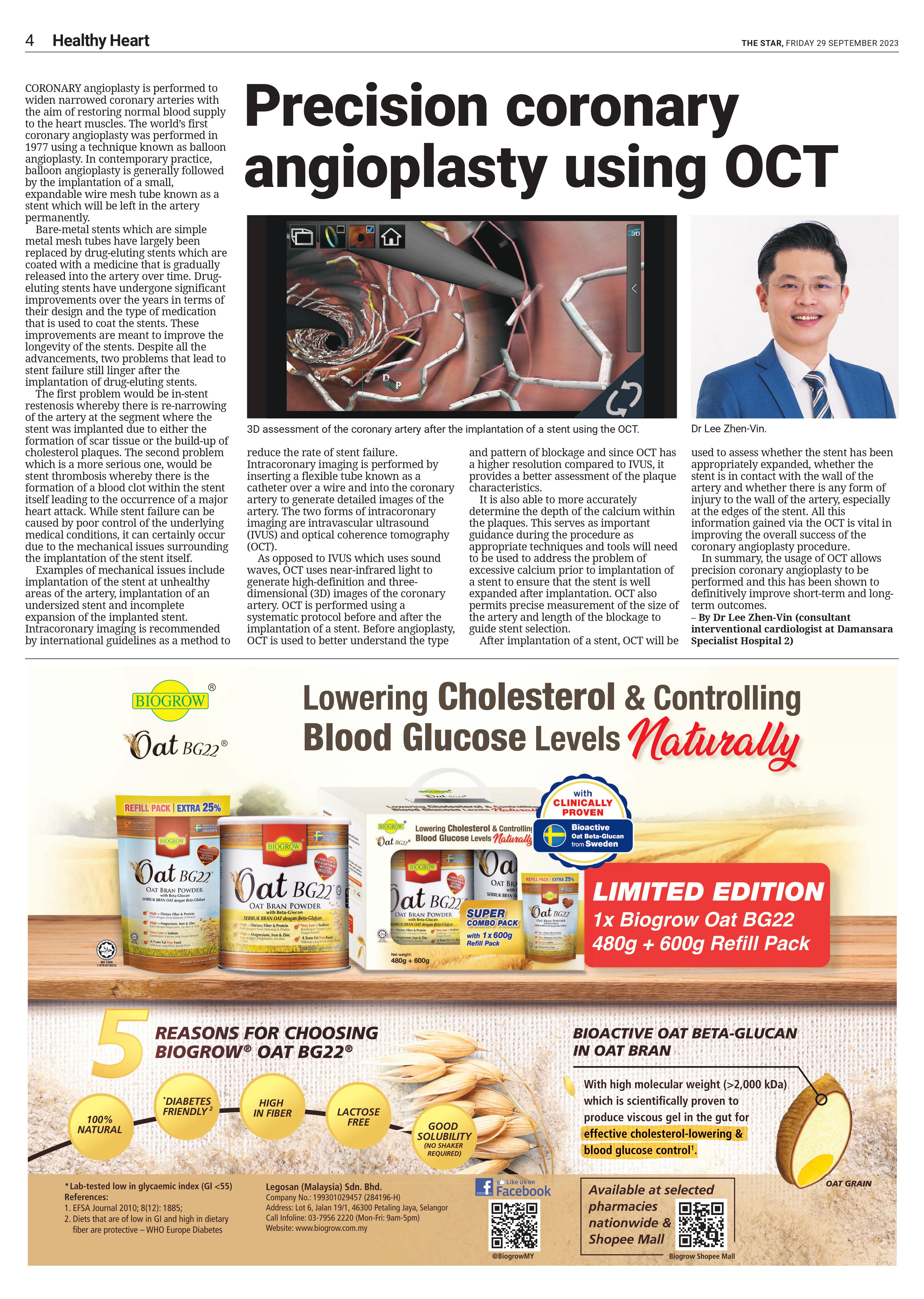Precision Coronary Angioplasty using OCT

Precision Coronary Angioplasty using OCT
CORONARY angioplasty is performed to widen narrowed coronary arteries with the aim of restoring normal blood supply to the heart muscles. The world’s first coronary angioplasty was performed in 1977 using a technique known as balloon angioplasty. In contemporary practice, balloon angioplasty is generally followed by the implantation of a small, expandable wire mesh tube known as a stent which will be left in the artery permanently.
CORONARY angioplasty is performed to widen narrowed coronary arteries with the aim of restoring normal blood supply to the heart muscles. The world’s first coronary angioplasty was performed in 1977 using a technique known as balloon angioplasty. In contemporary practice, balloon angioplasty is generally followed by the implantation of a small, expandable wire mesh tube known as a stent which will be left in the artery permanently.
Bare-metal stents which are simple metal mesh tubes have largely been replaced by drug-eluting stents which are coated with a medicine that is gradually released into the artery over time. Drug-eluting stents have undergone significant improvements over the years in terms of their design and the type of medication that is used to coat the stents. These improvements are meant to improve the longevity of the stents. Despite all the advancements, two problems that lead to stent failure still linger after the implantation of drug-eluting stents.
The first problem would be in-stent restenosis whereby there is re-narrowing of the artery at the segment where the stent was implanted due to either the formation of scar tissue or the build-up of cholesterol plaques. The second problem which is a more serious one, would be stent thrombosis whereby there is the formation of a blood clot within the stent itself leading to the occurrence of a major heart attack. While stent failure can be caused by poor control of the underlying medical conditions, it can certainly occur due to the mechanical issues surrounding the implantation of the stent itself.
Examples of mechanical issues include implantation of the stent at unhealthy areas of the artery, implantation of an undersized stent and incomplete expansion of the implanted stent. Intracoronary imaging is recommended by international guidelines as a method to reduce the rate of stent failure. Intracoronary imaging is performed by inserting a flexible tube known as a catheter over a wire and into the coronary artery to generate detailed images of the artery. The two forms of intracoronary imaging are intravascular ultrasound (IVUS) and optical coherence tomography (OCT).
As opposed to IVUS which uses sound waves, OCT uses near-infrared light to generate high-definition and three-dimensional (3D) images of the coronary artery. OCT is performed using a systematic protocol before and after the implantation of a stent. Before angioplasty, OCT is used to better understand the type and pattern of blockage and since OCT has a higher resolution compared to IVUS, it provides a better assessment of the plaque characteristics. It is also able to more accurately determine the depth of the calcium within the plaques.
This serves as important guidance during the procedure as appropriate techniques and tools will need to be used to address the problem of excessive calcium prior to implantation of a stent to ensure that the stent is well expanded after implantation. OCT also permits precise measurement of the size of the artery and length of the blockage to guide stent selection.
After implantation of a stent, OCT will be used to assess whether the stent has been appropriately expanded, whether the stent is in contact with the wall of the artery and whether there is any form of injury to the wall of the artery, especially at the edges of the stent. All this information gained via the OCT is vital in improving the overall success of the coronary angioplasty procedure. In summary, the usage of OCT allows precision coronary angioplasty to be performed and this has been shown to definitively improve short-term and long-term outcomes.
Source: The Star Special
– By Dr Lee Zhen-Vin, Consultant
Interventional Cardiologist at Damansara Specialist Hospital 2
For more information, contact 03-7717 3000.




 Promotion
Promotion
 Find Doctor
Find Doctor


